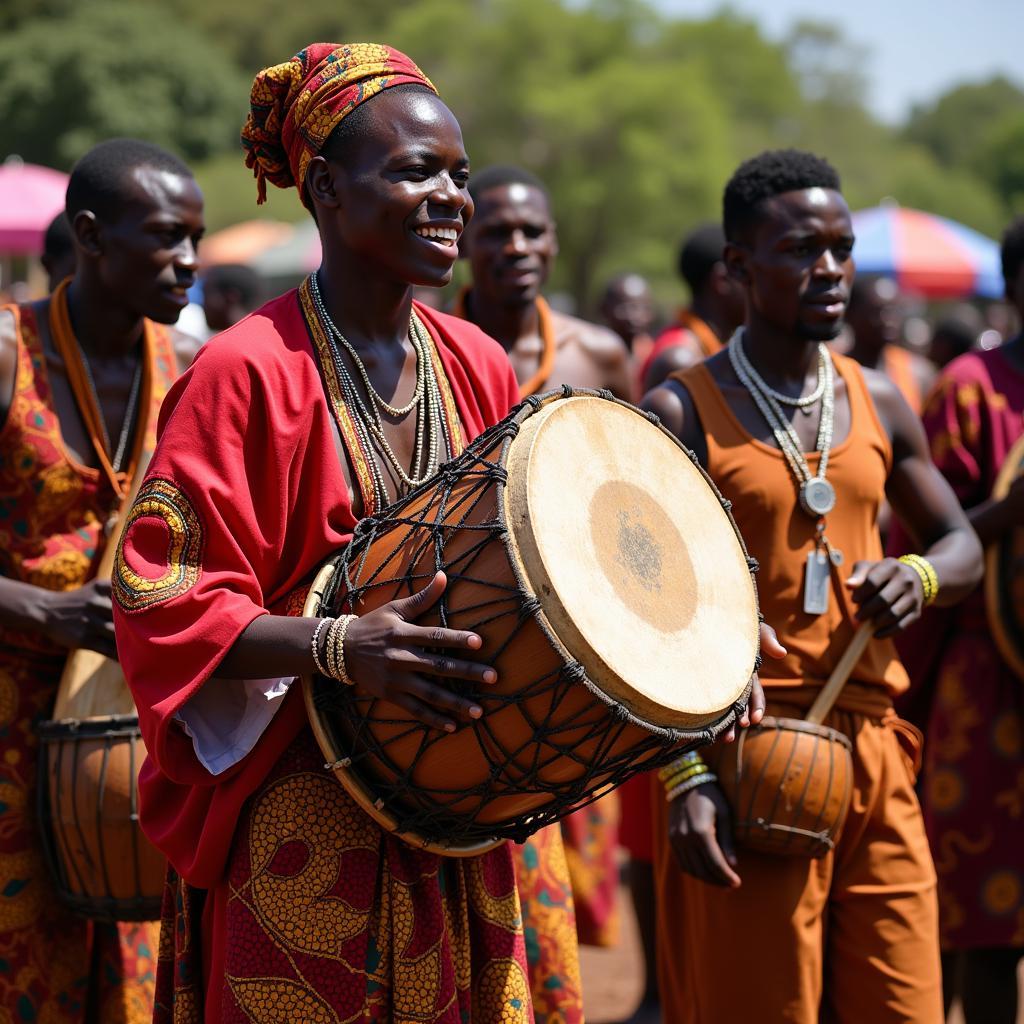The Rhythmic Legacy: African American Step Dancing
African American Step Dancing, a vibrant art form rooted in African traditions and the experiences of enslaved people in America, has evolved into a powerful expression of culture, community, and resilience. This article delves into the captivating history, unique style, and enduring influence of this dynamic dance form.
A History Steeped in Resilience
Step dancing, also known as stepping, traces its origins back to the rhythmic footwork and hand clapping of African cultures. These traditions were brought to America by enslaved Africans, where they adapted and transformed under the harsh realities of slavery. The rhythmic footwork, hand clapping, and call-and-response patterns became a means of communication, a way to preserve cultural identity, and a channel for emotional expression.
During the Reconstruction era, step dancing found its way into Black fraternities and sororities, gaining prominence as a form of entertainment and camaraderie. The vibrant energy and intricate formations of step dancing captivated audiences, making it a symbol of Black pride and empowerment.
The Essence of Step Dancing
Step dancing is characterized by a combination of percussive footwork, synchronized body movements, and vocalizations. The intricate steps are often executed in precise formations, creating a visual spectacle of synchronized movement and rhythmic intensity. The rhythmic elements, including stomps, claps, and snaps, combine with vocalizations and shouts to produce a dynamic sonic landscape.
Variations and Styles
Step dancing has evolved into numerous variations, each reflecting the unique history and cultural influences of the communities where it is practiced. These variations include:
- Traditional Step: This style emphasizes the percussive footwork, hand clapping, and vocalizations that are characteristic of early forms of step dancing.
- Modern Step: Modern step dancing incorporates elements of hip hop, jazz, and contemporary dance, resulting in a more fluid and dynamic style.
- Greek Step: This variation is primarily practiced by Black fraternities and sororities, featuring synchronized steps, vocalizations, and intricate formations.
Beyond Entertainment: A Symbol of Unity and Empowerment
Step dancing is more than just a dance form; it is a powerful symbol of African American culture and history. It serves as a way to celebrate heritage, honor ancestors, and foster a sense of community.
“Step dancing is about more than just the steps; it’s about telling a story, expressing your emotions, and connecting with your heritage.” – Dr. Maya Johnson, Professor of African American Studies
Step dancing is a platform for creative expression, allowing individuals to showcase their talents, express their individuality, and forge bonds with others. It is a testament to the resilience and adaptability of the African American community, serving as a powerful reminder of the strength that comes from collective expression and shared experience.
The Enduring Legacy of Step Dancing
Step dancing continues to be a vibrant and evolving art form, attracting new generations of dancers who are inspired by its energy, creativity, and cultural significance. It has become a global phenomenon, with step teams performing at prestigious events and competitions worldwide.
“Step dancing is a powerful reminder that our history and culture are alive and thriving. It’s a legacy that we carry forward with pride and determination.” – Mr. David Williams, Step Dance Coach
Step dancing has transcended its origins, becoming a form of cultural diplomacy, connecting people from diverse backgrounds through its shared rhythm and universal appeal. It is a testament to the enduring power of art to transcend boundaries, foster unity, and inspire generations to come.
FAQs
1. What is the difference between step dancing and tap dancing?
Step dancing is a percussive dance form rooted in African traditions, emphasizing rhythmic footwork, body movements, and vocalizations. Tap dancing is a more melodic form of dance, utilizing metal taps on the shoes to create a variety of musical sounds.
2. What are some famous step dance teams?
There are numerous renowned step dance teams, including Alpha Phi Alpha Fraternity, Delta Sigma Theta Sorority, and the Step Afrika! These teams have garnered international acclaim for their dynamic performances and contributions to the art form.
3. How can I learn step dancing?
There are many ways to learn step dancing, including joining a step team, taking classes at a local dance studio, or finding online resources. It’s essential to find a teacher or team that aligns with your learning style and interests.
4. What are some of the benefits of step dancing?
Step dancing offers numerous physical and mental benefits, including:
- Improved coordination and balance
- Enhanced cardiovascular health
- Increased strength and flexibility
- Reduced stress and anxiety
- Fostering a sense of community and belonging
5. Is step dancing only for Black people?
Step dancing is an art form that celebrates African American culture, but it is open to everyone who is interested in learning and participating. Many step teams welcome individuals of all backgrounds, fostering diversity and inclusivity.
Looking for more information on African culture?
- Discover more about African American line dances.
- Explore the fascinating facts about African festivals.
- Learn about the African booty dance performed during carnival celebrations.
- Explore other activities that showcase the richness of African American culture.
Contact Us:
If you have any questions or need assistance, please don’t hesitate to reach out to us:
Phone: +255768904061
Email: [email protected]
Address: Mbarali DC Mawindi, Kangaga, Tanzania
We have a dedicated customer support team available 24/7 to assist you.

